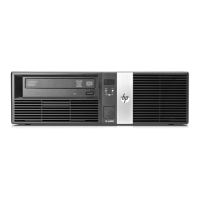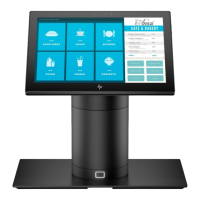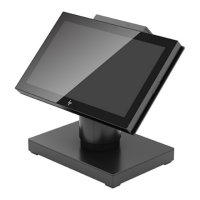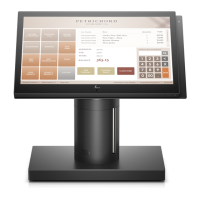StopBits
Clk
Asterisk
EnqAck
StripHulDel
SR(CH)
TR(CD)
Data
Communications
Table 7-4.
Point-to-Point
Configuration
Menu
Fields (Continued)
This field specifies
the
number
of
"stop
bits"
you wish appended
to
each data character
transmitted by
the
terminal (received data is accepted with one or more stop bits regardless
of
the
setting
of
this field).
Values:
1.5
2
This field specifies whether the data com m clock source is
to
be generated by the terminal or by the
external device.
If
an
external
clock
source is selected, this field also specifies what multiplication
factor is
to
be
used
for
synchronizing with the external clock source.
Values: IHT
EXT
X1
EXTX16
The
HP
264x family
of
terminals all have a TRANSMIT indicator (LED): On the
HP
2624A,
an
asterisk
below the current row/column numbers
atthe
bottom line on the screen serves this function. When
the asterisk is present, the
TRANSMIT indicator is on; when the asterisk is missing, the TRANSMIT
indicator is off.
This
field specifies
whether
the transmit indicator should be enabled
or
disabled and,
if
enabled,
which RS-232C control line
it
should reflect.
The value
"OFF"
disables the TRANSMIT indicator altogether. The value
"CS"
specifies
that
the
TRANSMIT indicator should reflect the state
of
the
RS-232C Clear
to
Send (CS) control line
(asterisk=HI;
no asteris·k=LO). The value
"OM"
specifies that the TRANSMIT indicator should
reflect
the
state
of
the RS-232C Data Mode (OM) or Data Set Ready (CC) control line (asterisk=HI; no
asterisk=LO).
Values:
OFF
CS
OM
This field enables or disables
the
use
of
the
Hewlett-Packard EHQ-ACK handshake. This
type
of
handshaking is described under "Pacing Mechanisms" in the "Point-to-Point Programming
Information" portion
of
this section.
Values:
YES
HO
(enable)
(disable)
This field specifies whether all <HULL> and <DEL> codes are to
be
deleted from the input data stream
without
being processed. With 7-bit data the codes are hexadecimal 0 and
7F,
respectively, and
with a-bit data they are
0 and
FF.
Values:
YES
(delete NULLs and DELs)
HO
(treat NULLs and DELs as data)
The
default value
for
this field is
"YES".
In most point-to-point data comm configurations you will
typically want NULL and DEL codes deleted.
This field specifies the desired state
of
the
RS-232C SR line when the terminal's power is first
turned on or when the
terminal is reset. The SR line, RS-232C pin number 23
of
the HP 13222/13242
C,
M, and N cables, is defined as the Data Signal Rate Detector (DTE Source). It is normally used on
dual speed modems
to
select the appropriate speed (single speed modems merely ignore this line).
Values:
HI
LO
This field specifies the desired state
of
the
RS-232C TR line when
the
terminal's power is first
turned on
orwhen
the terminal is reset. The TR line, RS-232C pin
number
20
of
the HP 13222/13242
C,
M, and N cables, is defined as Data Terminal Ready. Whenever the terminal performs a
disconnect,
it
also returns the TR line
to
the
state specified by this field.
Values:
HI
LO
7-9
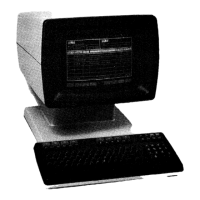
